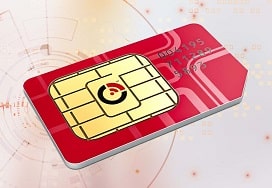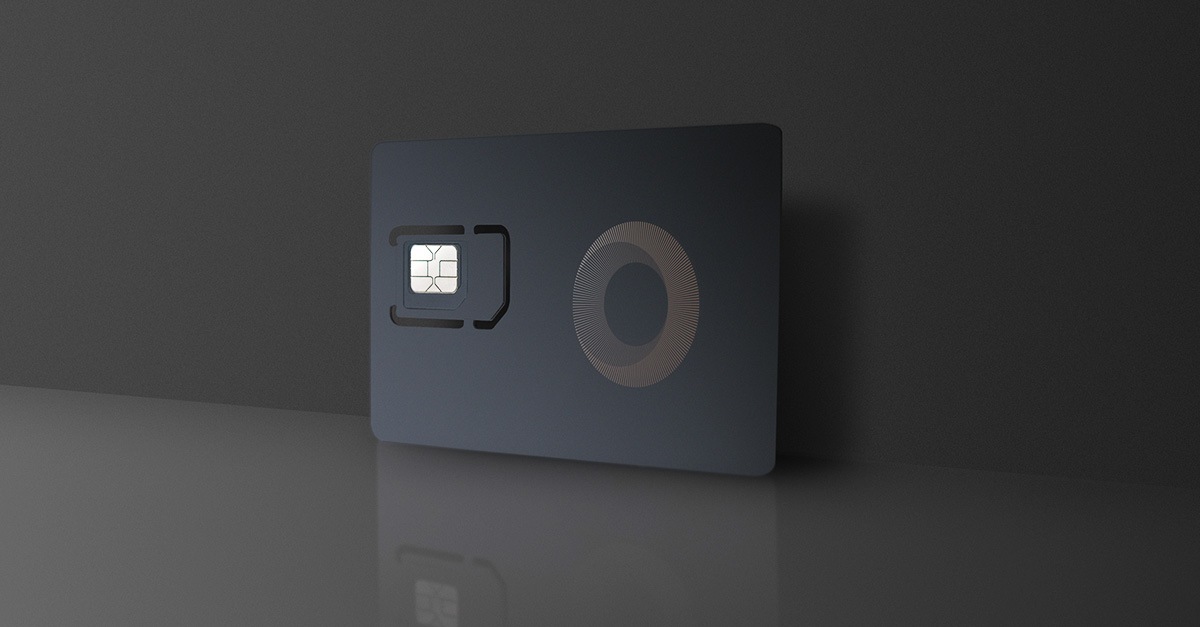Free Iot Sim Card Global IoT ecoSIM Card

In the rapidly evolving landscape of the Internet of Things (IoT), the demand for efficient, resilient, and low-energy connectivity options is extra crucial than ever. As devices proliferate and the necessity for fixed knowledge transmission grows, low-power IoT connectivity protocols have emerged as essential enablers for the ecosystem. Understanding these protocols is important for builders, engineers, and businesses aiming to leverage IoT technologies successfully.
Low-power connectivity is primarily geared toward options that require minimal energy consumption while facilitating communication throughout quite a few devices. The hallmark of those protocols lies of their ability to maintain lengthy battery life, often extending to several years for units operating on small batteries. The steadiness between energy effectivity and reliable connectivity is a core tenet of IoT deployments.
Iot Sim Card Pricing IoT SIM card Networking Protocols Devices
One of the most recognized low-power connectivity choices is LoRaWAN. It stands for Long Range Wide Area Network and is designed for long-range transmissions with low power requirements. LoRa permits units to communicate over distances that surpass conventional wi-fi options, making it suitable for applications corresponding to agriculture and smart metropolis infrastructure.
LoRaWAN operates in unlicensed frequency bands, allowing for significant price savings, though this additionally means increased potential for interference. The structure employs a star network topology, connecting varied sensors to gateways, which then talk with a central server. This approach permits devices to remain in a low-power sleep mode until they need to transmit knowledge, conserving energy.
Another prominent protocol is Sigfox, which additionally operates in a low-energy, wide-area context. It is specifically tailor-made for small messages, optimizing the transmission of lightweight information packets. This makes it best for functions like asset tracking and environmental monitoring, the place only transient updates are needed.

Unlike LoRaWAN, Sigfox utilizes a less complicated protocol designed primarily for uplink messages, transmitting info from devices to the cloud. Its distinctive approach to information transmission leads to a simple and effective ecosystem that prioritizes battery longevity and community scalability, even as the variety of connected gadgets grows.
Best IoT SIM Card IoT SIM Cards Professional IoT Connectivity
Zigbee has carved its area of interest in low-power, short-range connectivity, notably for home automation and industrial functions. It employs a mesh network topology, permitting devices to relay messages to one another, successfully extending the range of communication while not having high energy expenditure. Each system in the Zigbee community acts as a repeater, enabling extra strong connectivity in environments affected by obstacles that might otherwise disrupt communication.
Zigbee supports multiple channels inside the 2.4 GHz band, offering versatility and flexibility for gadget intercommunication. Its low power consumption model makes it appropriate for battery-operated devices that demand lengthy operational life, although the bounds of range might hinder some applications.
Iot Sim Card Ruggedized IoT SIM eSIM
Bluetooth Low Energy (BLE) serves the precise purpose of offering a low-power alternative to classical Bluetooth. Commonly present in wearables and health-monitoring gadgets, BLE enhances energy efficiency by permitting devices to remain in a low-power sleep state whereas still sustaining the ability to transmit knowledge.
This protocol exemplifies the adaptability required for IoT deployments, providing a steadiness between data transmission velocity and energy wants. BLE has gained traction in various shopper electronics, establishing standards for health trackers and smart home units the place power consumption is a crucial issue.
Narrowband IoT (NB-IoT) represents another low-power various that integrates seamlessly into present cellular networks. Utilizing solely a narrow band of frequency, NB-IoT effectively enhances connectivity for units in hard-to-reach areas. This solution emphasizes the importance of cost-effective scalability for city environments, the place numerous devices should reliably operate without delay.
The protocol's ability to penetrate deep indoors means it is completely suited to applications that involve constructing utilities or enhanced metropolis infrastructures - Global Iot Sim Card. The evolution of NB-IoT represents convergence between conventional cellular networks and fashionable IoT necessities, enabling service suppliers to supply low-cost solutions with in depth coverage.
Iot Sim Card Pricing IoT SIM cards
Weighting the options of all these low-power connectivity protocols leads to examining them through various lenses, including application context, energy demands, and information necessities. Understanding these protocols' nuances permits for knowledgeable decision-making in choosing probably the most suited choice for specific use cases.
For developers advocating fast deployment and intensive scalability, selecting amongst these options can have lasting implications. As networks grow and device counts lessen the limitations of conventional infrastructures, these protocols have unlocked pathways to revolutionary solutions throughout a variety of Your Domain Name sectors. Each protocol serves specific niches, catering to varying demands around energy effectivity, distance, and information integrity.

Future advancements in low-power IoT connectivity protocols promise even more sophisticated options. The integration of machine studying and synthetic intelligence into these networks can lead to self-optimizing architectures, thus further refining energy use while boosting efficiency metrics. Steering towards a extra sustainable IoT landscape will hinge upon improving these protocols to handle the rising information calls for competitive with traditional, extra energy-hungry networks.
In conclusion, the panorama of low-power IoT connectivity protocols is a tapestry of diverse options tailor-made to satisfy specific use cases. LoRaWAN, Sigfox, Zigbee, BLE, and NB-IoT every present unique advantages that may enhance the performance and efficiency of connected gadgets. check this site out As the world continues to embrace the Internet of Things, understanding and leveraging these protocols will play a pivotal position in driving innovation and sustainability across varied industries.
Free Iot Sim Card Why not use consumer SIMs IoT projects
- Low-power IoT connectivity protocols are designed to optimize energy consumption, permitting units to operate for extended intervals on restricted battery power.
- LoRaWAN (Long Range Wide Area Network) facilitates long-range transmissions with minimal power utilization, making it best for rural and expansive areas.
- NB-IoT (Narrowband IoT) utilizes current cellular networks and provides improved indoor coverage, low latency, and higher battery life compared to traditional cellular protocols.
- Zigbee operates in a mesh network topology, enabling gadgets to communicate not directly, enhancing vary and reliability while conserving energy.
- Thread is an IP-based protocol that gives safe and scalable communication for low-power devices, making it appropriate for house automation applications.
- Sigfox makes a speciality of ultra-narrowband radio know-how, focusing on the transmission of small information packets over long distances with excessive energy efficiency.
- Bluetooth Low Energy (BLE) is often used for short-range communication, significantly reducing energy consumption whereas maintaining an excellent connection range.
- Weightless is a collection of standards focused on low-power, wide-area networking, providing totally different variants tailored to specific application wants.
- Anticipating the rise of smart cities, low-power IoT protocols facilitate infrastructure communication, enhancing the efficiency of sources and services.
- Security stays a priority throughout all low-power IoT protocols, incorporating encryption and authentication measures to protect gadget communications from potential threats.undefinedWhat are low-power IoT connectivity protocols?
Low-power IoT connectivity protocols are communication standards designed for devices that need to function with minimal energy consumption. These protocols allow environment friendly data transmission over brief to lengthy distances whereas preserving battery life, making them perfect for functions such as smart houses, wearable know-how, and environmental monitoring.
Why are low-power protocols necessary for IoT devices?
Low-power protocols are essential for IoT gadgets as they permit for prolonged operation on limited energy sources, such as batteries or energy harvesting methods. This is significant in purposes the place frequent charging or battery alternative is impractical, guaranteeing that gadgets stay practical over lengthy intervals.
Iot M2m Sim Card IoT Data SIM Card Plans Features
What are some examples of low-power IoT connectivity protocols?
Common low-power IoT connectivity protocols include LoRaWAN, Sigfox, Zigbee, and NB-IoT. Each of these protocols has unique features tailored for various use instances, corresponding to long-range connectivity, low information charges, and mesh networking capabilities, making them appropriate for varied IoT applications.
How do low-power protocols differ from traditional connectivity protocols?
Low-power protocols are specifically designed to minimize energy consumption and optimize battery life, while traditional protocols like Wi-Fi and Bluetooth may prioritize higher data throughput. Low-power protocols often support longer-range communication and lower data rates, making them fit for IoT applications that require longevity over pace.
Iot Sim Card South Africa Global IoT SIM Card Multi-Network M2M
What components must be thought of when choosing a low-power IoT connectivity protocol?
When selecting a low-power IoT connectivity protocol, consider factors such as range, data rate, energy consumption, community topology, and the particular necessities of the applying. Additionally, assess the provision of community infrastructure, scalability, and compatibility with current techniques to make sure a seamless deployment.
Can low-power protocols help real-time knowledge transmission?
Cheapest Iot Sim Card Reliable IoT SIM Cards Global Connectivity
While low-power protocols are usually optimized for energy effectivity, some, like NB-IoT, can assist real-time information transmission to a certain extent. However, they is most likely not suitable for purposes requiring high-speed information switch. Choose a protocol primarily based on the urgency of information transmission wants versus energy conservation.
Are low-power IoT connectivity protocols secure?
Iot Sim Card Europe IoT SIM Cards Explained Connectivity
Security in low-power IoT protocols varies by protocol. Many modern low-power protocols integrate encryption and authentication features to safeguard data against unauthorized access. It's essential to review a protocol's security measures and consider additional layers of safety primarily based on the particular use case.
What industries profit most from low-power IoT connectivity protocols?
(Iot Sim Card Europe)
Free Iot Sim Card The Ultimate Guide IoT SIM Cards
Industries similar to agriculture, smart cities, healthcare, and logistics significantly benefit from low-power IoT connectivity protocols. These sectors often require gadgets to watch, collect, and transmit data over prolonged durations without frequent maintenance, making low-power choices advantageous.
Is the deployment of low-power IoT connectivity protocols complex?
The complexity of deploying low-power IoT connectivity protocols is dependent upon the particular protocol and the present infrastructure. Generally, they are designed for ease of use, but components similar to network configuration, gadget compatibility, and required scalability ought to be carefully deliberate to ensure a easy implementation.